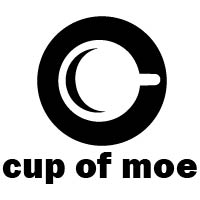We may earn money or products from the companies mentioned in this post.
Hammer Studios ushered in a monster renaissance with the phenomenal Frankenstein and Dracula film franchises, taking the reins from Universal. In 2012 they further exhibited their penchant for horror classics with a creepy period piece based on Susan Hill’s novel The Woman in Black. Very much a throwback to 70’s atmospheric, suspense-based horror, “The Woman in Black” successfully proved that Daniel Radcliffe could act beyond the confines of Hogwarts and reminded us why we love the horror genre.
The opening scene of “The Woman in Black” chillingly sets the tone for the rest of the film: three young girls are playing, enjoying a tea party, when they arise and jump out the window. Flash forward to London several years later, and we meet lawyer Arthur Kipps (Daniel Radcliffe), who has recently been assigned the estate sale of Eel Marsh House. Upon arriving at the village, Arthur isn’t greeted cheerily. The locals are mainly standoffish, except for Samuel Daily (Ciaran Hinds) and wife Elisabeth (Janet McTeer).

“The Woman in Black” differentiates itself from contemporary horror flicks through trading buckets of blood for loads of suspense. It relies heavily on a dark, brooding atmosphere and tension rather than gore. Despite moving a bit slower than most modern movies, Hammer Studios’ release grasps viewer attention. Daniel Radcliffe does a truly terrific job, and while his supporting cast is great, we spend the most time getting acquainted with Arthur Kipps. Jaw-dropping scenery further solidifies what’s already a strong production. Deserted halls, creepy children’s toys, and ghostly apparitions forge a haunting film that evokes the feel of older, classic cinema, the likes of which solidified Hammer’s legacy.
This post may contain affiliate links. We are a participant in affiliate programs such as the Amazon Services LLC Associates Program, an affiliate advertising program designed to provide a means for us to earn fees by linking to Amazon.com and affiliated sites. However, all products are thoroughly tested and reviews are honest and unbiased.
